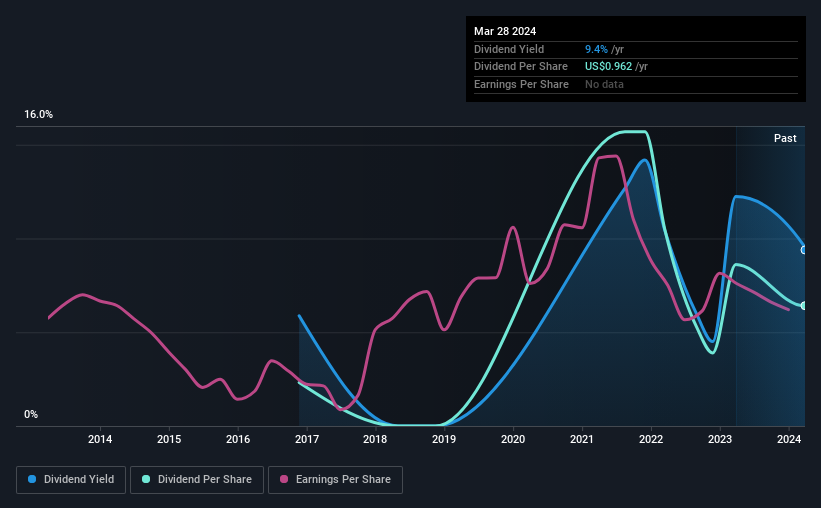- United States
- /
- Food and Staples Retail
- /
- NasdaqCM:WILC
G. Willi-Food International (NASDAQ:WILC) Has Announced A Dividend Of ₪0.20

G. Willi-Food International Ltd. (NASDAQ:WILC) has announced that it will pay a dividend of ₪0.20 per share on the 17th of April. This means the annual payment is 9.4% of the current stock price, which is above the average for the industry.
Check out our latest analysis for G. Willi-Food International
G. Willi-Food International's Earnings Easily Cover The Distributions
A big dividend yield for a few years doesn't mean much if it can't be sustained. Based on the last dividend, G. Willi-Food International is earning enough to cover the payment, but then it makes up 483% of cash flows. While the company may be more focused on returning cash to shareholders than growing the business at this time, we think that a cash payout ratio this high might expose the dividend to being cut if the business ran into some challenges.
Over the next year, EPS could expand by 3.9% if recent trends continue. Assuming the dividend continues along recent trends, we think the payout ratio could be 17% by next year, which is in a pretty sustainable range.

G. Willi-Food International's Dividend Has Lacked Consistency
It's comforting to see that G. Willi-Food International has been paying a dividend for a number of years now, however it has been cut at least once in that time. This suggests that the dividend might not be the most reliable. The annual payment during the last 7 years was ₪1.28 in 2017, and the most recent fiscal year payment was ₪3.54. This means that it has been growing its distributions at 16% per annum over that time. Dividends have grown rapidly over this time, but with cuts in the past we are not certain that this stock will be a reliable source of income in the future.
Dividend Growth May Be Hard To Achieve
With a relatively unstable dividend, it's even more important to see if earnings per share is growing. Earnings per share has been crawling upwards at 3.9% per year. Growth of 3.9% per annum is not particularly high, which might explain why the company is paying out a higher proportion of earnings. While this isn't necessarily a negative, it definitely signals that dividend growth could be constrained in the future unless earnings start to pick up again.
In Summary
Overall, it's not great to see that the dividend has been cut, but this might be explained by the payments being a bit high previously. With cash flows lacking, it is difficult to see how the company can sustain a dividend payment. Overall, we don't think this company has the makings of a good income stock.
Market movements attest to how highly valued a consistent dividend policy is compared to one which is more unpredictable. However, there are other things to consider for investors when analysing stock performance. Case in point: We've spotted 3 warning signs for G. Willi-Food International (of which 1 is significant!) you should know about. Looking for more high-yielding dividend ideas? Try our collection of strong dividend payers.
New: Manage All Your Stock Portfolios in One Place
We've created the ultimate portfolio companion for stock investors, and it's free.
• Connect an unlimited number of Portfolios and see your total in one currency
• Be alerted to new Warning Signs or Risks via email or mobile
• Track the Fair Value of your stocks
Have feedback on this article? Concerned about the content? Get in touch with us directly. Alternatively, email editorial-team (at) simplywallst.com.
This article by Simply Wall St is general in nature. We provide commentary based on historical data and analyst forecasts only using an unbiased methodology and our articles are not intended to be financial advice. It does not constitute a recommendation to buy or sell any stock, and does not take account of your objectives, or your financial situation. We aim to bring you long-term focused analysis driven by fundamental data. Note that our analysis may not factor in the latest price-sensitive company announcements or qualitative material. Simply Wall St has no position in any stocks mentioned.
About NasdaqCM:WILC
G. Willi-Food International
Designs, imports, markets, and distributes food products worldwide.
Flawless balance sheet and good value.
Similar Companies
Market Insights
Community Narratives




